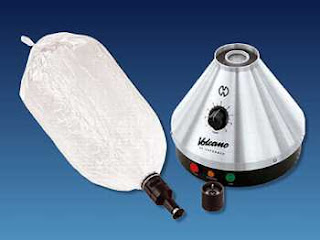Using this particular technique, chefs add a mixture of desired oils or aromatic ingredients over dry ice in a container at the table. Since dry ice is merely carbon dioxide, when we heat the ice, it will evaporate back into its gaseous form and then disperse the aroma contained within it on the food itself.
Some examples of the use of this interesting technique is in Heston's Flaming Sorbet where the waiter pours a mixture of oak moss essential oil, hot water, and alcohol which carries the aroma of damp wood to complement the dish itself.
Vaporization on the other hand, is much simpler and uses a simple vaporizer which is an appliance used by many molecular gastronomy chefs in order to bring out the desired aroma. However, vaporizers may also be used to infuse flavour into liquids and not just solid food itself and filling bubbles with aroma as well thus, making it a very handy appliance for any creative chef!
Images from:
http://www.molecularrecipes.com/molecular-gastronomy/vaporization-flavoring-food-pure-aromatic-vapor/
http://www.vaporizersftw.com/why-a-vaporizer-and-vaporizer-reviews-are-important/
References:
Dispersing Aromas with Dry Ice Vapor. (n.d.). Retrieved from Molecular Recipes:
http://www.molecularrecipes.com/techniques/dispersing-aromas-dry-ice-vapor/
Vaporization: Flavoring Food with Pure Aromatic
Flavor. (n.d.). Retrieved from
Molecular Recipes:
http://www.molecularrecipes.com/molecular-gastronomy/vaporization-flavoring-food-pure-aromatic-vapor/


Where're your in-text citations? Remember always refer to APA referencing format, even for images on the Web.
ReplyDeleteThis one is good. Keep up the good work I also visit here: and I get lot of information. vape
ReplyDelete